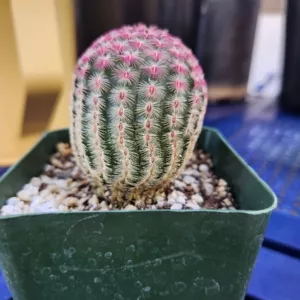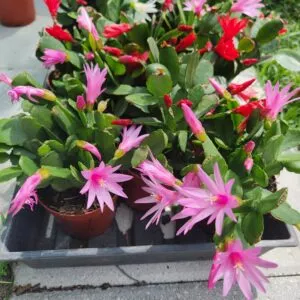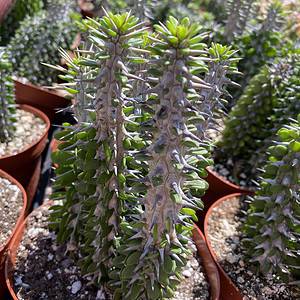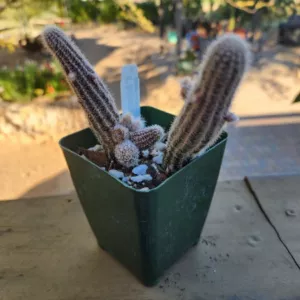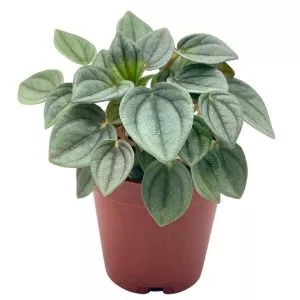No products in the cart.
Table of Contents
You walk down the nursery aisle and notice these peculiar neon-colored cactus plants. The cacti are all bright, and you want to take these colorful babies home with you. Yes, you have met the moon cactus that looks like round balls in neon yellow, orange, or bright pink.
You can place them on a desk or in a window to bring a pop of color to your work or living space. Now, you wonder how this plant turned into such a bright color and how you care for it. We will help you with excellent care tips to keep your moon cactus alive.
What is Moon Cactus?

When you look at the moon cactus, it seemed grafted and human-made. Furthermore, the bright-colored plant is grafted atop a green cactus with some spikes. Hence, the top section is the scion or Gymnocalycium mihanovichii.
While the lower host cactus can be from different cacti indoors or outdoor plants but typically, they use the Hylocereus cactus. Once the pieces join, they become the moon cactus, ruby ball cactus, red cap, and more.
The green-colored cactus is the rootstock, while the top section that does not produce chlorophyll by itself is the moon cactus. Yet, these cactus species usually last only a few years as the top section grows at a different rate and destroys the graft between the two sections.
Still, you can separate the sections to graft them onto a new rootstock cactus. Furthermore, as indoor plants, they remain miniature most of the time. The plant was first discovered in 1903 by Czech botanist Alberto Vojtěch Frič.
In 1905 it received the description Echinocactus mihanovichii by Max Gürke, and in 1922 it received a place in the Gymnocalycium genus.
Moon Cactus Care

The moon cactus is similar to other perennial succulents and cacti species. The plant grows as other cacti species grow with the same care. Even if the ruby ball cactus lives a few years, they are the effort. The host cactus is also native to South America and is a desert-loving plant.
Only 1 left in stock In stock Only 1 left in stock In stock
$10.00
Sold By:
Stripes and Variegations
Arizona Rainbow Rainbow Hedgehog Cactus
Sold By:
Stripes and Variegations
$20.00
Sold By:
PotHedz Plants
Easter Cactus
Rated 4.96 out of 5 based on 106 customer ratings00
Sold By:
PotHedz Plants
$10.00
Sold By:
Stripes and Variegations
Paper spine cactus or Pinecone Cactus
Sold By:
Stripes and Variegations
$31.99
Sold By:
Succulent Oasis
False Ocotillo Cactus
Rated 4.84 out of 5 based on 352 customer ratings00
Sold By:
Succulent Oasis
Soil for Moon Cacti
Like the Christmas cactus, Easter cactus, or other species growing moon cactus needs a well-draining soil mix. Hence, you must provide the two plants with the correct soil needs. The pot, when growing moon cacti, must have enough drainage holes as well.
We recommend coarse sand or perlite added to your potting soil mix.
Light Exposure for a Moon Cactus

When it comes to providing the right light, it can become tricky. The reason is that the top section prefers low light and dislikes direct sunlight compared to the bottom. So, what is the solution?
Well, providing your moon cactus with bright indirect sunlight will be best to accommodate both plants. Still, it should be only bright indirect light for up to two hours in the morning. When too much direct sunlight is present, the color fades.
So, it helps to provide adequate sunlight and keep an eye on your plant.
Watering a Moon Cactus to Prevent Root Rot
The ruby ball cactus needs soil that drains well, no matter what two cacti species you have. The same applies when it comes to your watering schedule, and that is to let the soil completely dry between watering.
When the soil is dry, you can water well. You may find in the summer months; you will water more if you move your cactus outside. As these moon cactuses are in small pots, it only needs watering weekly and refrain from watering in the winter months.
Instead, you can mist your plant.
In stock Only 1 left in stock In stock Only 1 left in stock
$8.00
Sold By:
Smoot's Farm
Cactus Feather Mammillaria Plumosa Plant
Only 9 available and it’s in 2 people’s basket Rated 4.89 out of 5 based on 27 customer ratings00
Sold By:
Smoot's Farm
$15.00
Sold By:
Stripes and Variegations
Monks Hood
Sold By:
Stripes and Variegations
$12.00
Sold By:
Smoot's Farm
Cactus Bishop’s Cap Hat Astrophytum Myriostigma 3” Pot
Rated 4.89 out of 5 based on 27 customer ratings00
Sold By:
Smoot's Farm
$10.00
Sold By:
Stripes and Variegations
Arizona Rainbow Rainbow Hedgehog Cactus
Sold By:
Stripes and Variegations
Fertilizing Moon Cactus
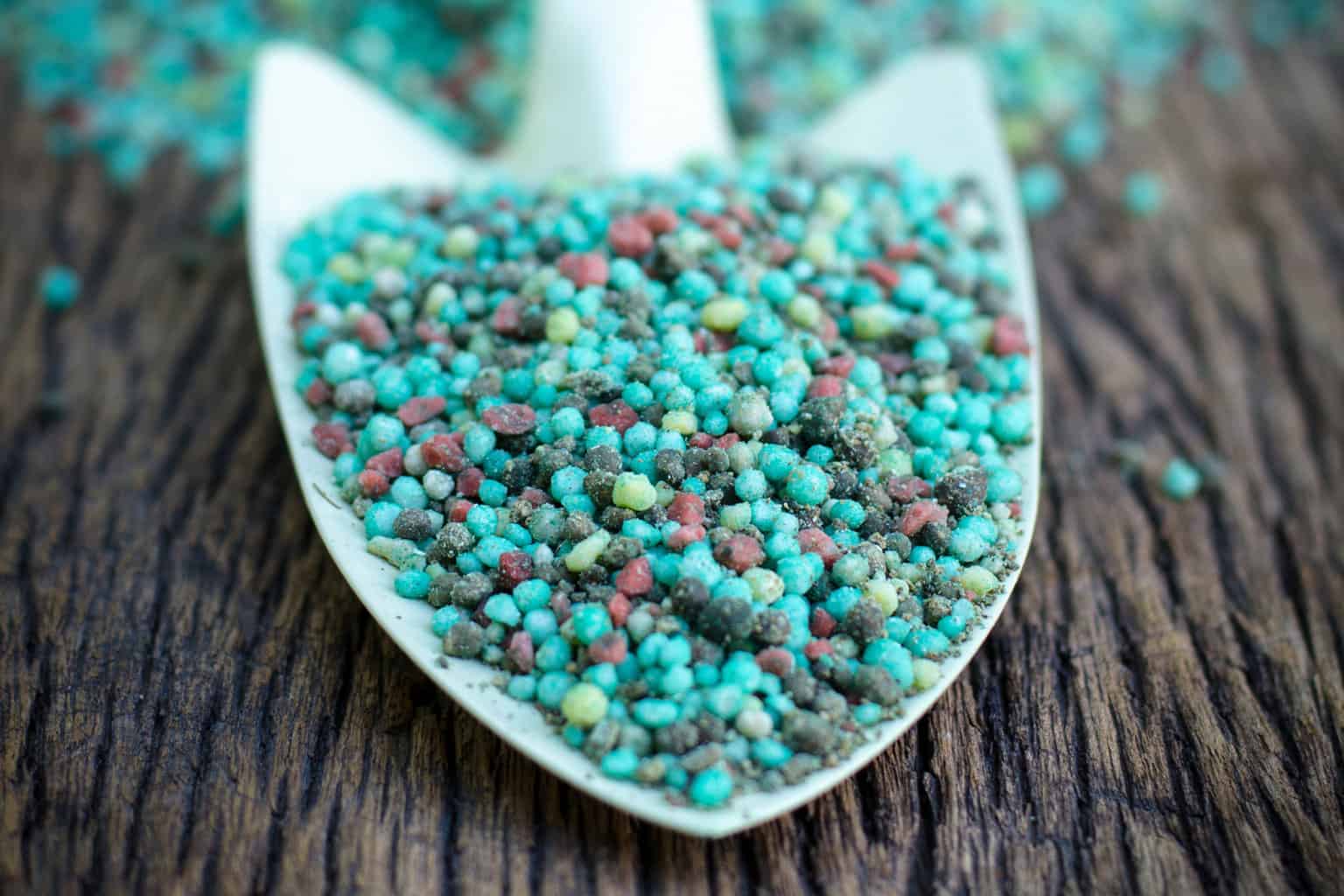
Most cacti do not need regular feeds, but you can give your moon cacti a dose of cactus fertilizer during the growing season. When your moon cactus is dormant in winter, you can stop feeding.
Temperature & Humidity
The best temperature condition for many species in the moon cactus is a warm one. In contrast, the upper scion is hardy. Some of the rootstocks are not. When winter arrives and temperatures drop, we recommend bringing your plant inside.
Furthermore, like most cacti, it prefers low humidity.
Propagating Moon Cactus Plants
As your cactus is a graft, there is no way to propagate your plant. What you can learn is to graft cacti, and not too tricky. What you can do is regraft cactus on top.
Take a sterilized knife and remove the top of a columnar-shaped cactus. Next, remove the scion from the bottom section.
Then press the two together, allowing the vascular tissue circles to align partially.
Take rubber bands and place them over the scion and bottom of your small pot allowing it to grow into the rootstock to hold them together.
Another thing you can do is to remove the offsets on the top and pot them as plants, but it still needs a hosting plant to supply the chlorophyll, or it will die.
Repotting Moon Cactus

As your moon cactus is grafted, the only time you may need to transplant it to a new pot is when you bring it home. The cactus is a slow grower with a short lifespan and seldom outgrows the container.
Still, if you need to transplant it, grab a pair of gloves and some succulent potting soil with a container a bit larger than the root ball. Ensure that the plant is dry and remove it from the pot.
Remove any old soil to expose the roots and inspect it for dead roots to remove. Place in a new pot with fresh soil and do not water right away. Instead, please wait for the new roots to settle into their new home. Then gradually start watering your plant.
Moon Cactus Varieties

You can find a wide selection of Gymnocalycium mihanovichii varieties with bright neon colors. The appearance varies depending on the cactus species used as the host and the scion cactus. You may find that your older cactus blooms vibrant flowers during summer.
Only 1 left in stock Only 1 left in stock Only 1 left in stock In stock
$15.00
Sold By:
Stripes and Variegations
Monks Hood
Sold By:
Stripes and Variegations
$10.00
Sold By:
Stripes and Variegations
Arizona Rainbow Rainbow Hedgehog Cactus
Sold By:
Stripes and Variegations
$9.00
Sold By:
Stripes and Variegations
Peanut cactus
Sold By:
Stripes and Variegations
$20.00
Sold By:
PotHedz Plants
Easter Cactus
Rated 4.96 out of 5 based on 106 customer ratings00
Sold By:
PotHedz Plants
Moon Cactus Diseases & Pests
When you care for an indoor plant, they become susceptible to disease and pests. For example, if you notice insects chewing on your hot pink moon cactus, you can use some neem oil spray to keep them away.
When you notice any beige to brown spots, it means when standing at a bright window, it is too sensitive to the sunlight. At the same time, cacti can tolerate direct sunlight the scion cannot. To recover from the sunburn, you can provide some water to recover fast.
Lastly, too much watering will lead to root rot, and if you notice brown to black spots and a soft stem, it can be from this fungal disease. The best is to salvage a cutting above the mushy part to plant in fresh soil.
Where to Buy a Moon Cactus Plant?
The fantabulous news is that you can find these miniature cacti at a local nursery. But the excellent news is you need not look far as Plantly has a collection of moon cactuses you can buy.
Whether you want to buy, sell or simply reach out to other plant enthusiasts, Plantly is the right place to be!
-
$10.00Sold By: Smoot's Farm
Only 1 left in stock
Echeveria Topsy Turvy Runyonii Succulent 4″ Pot Live Plant
Rated 4.89 out of 5 based on 27 customer ratings00Sold By: Smoot's Farm -
Free Shipping$24.95 – $29.95Sold By: A&K Plants
In stock
Lively Philodendron Neon | Easy-care Epiphytic Vine | Vibrant Foliage | 4-inch pot
Only 4 available and it’s in 1 people’s basketRated 4.95 out of 5 based on 66 customer ratings00Sold By: A&K Plants -
$30.00Sold By: Southern Oak Exotics
In stock
Chlorospatha Species Ex Ecuador
Sold By: Southern Oak Exotics -
$6.99Sold By: BubbleBlooms
In stock
Green Ripple Peperomia Frost
Only 97 available and it’s in 1 people’s basketRated 4.81 out of 5 based on 279 customer ratings00Sold By: BubbleBlooms
